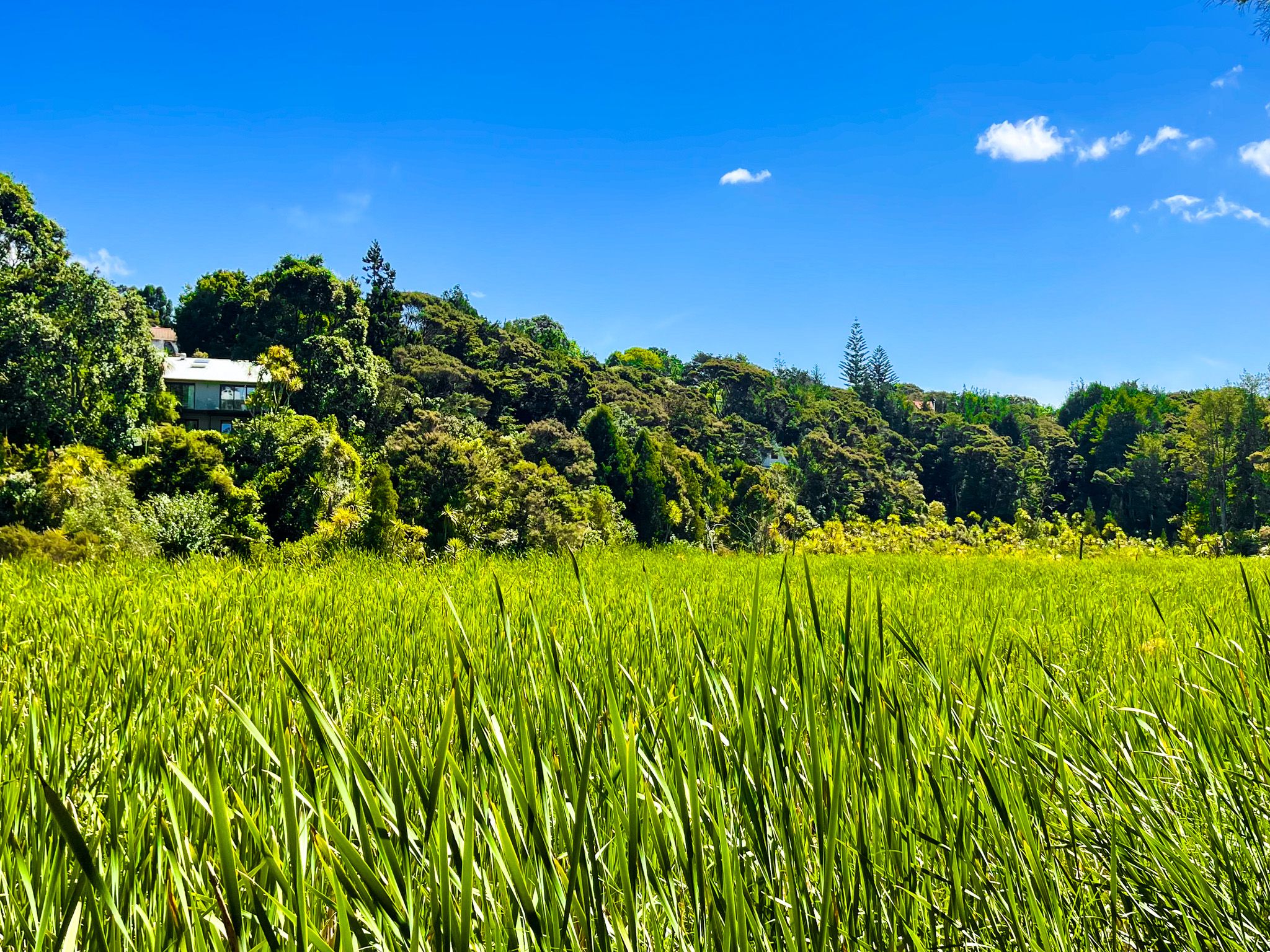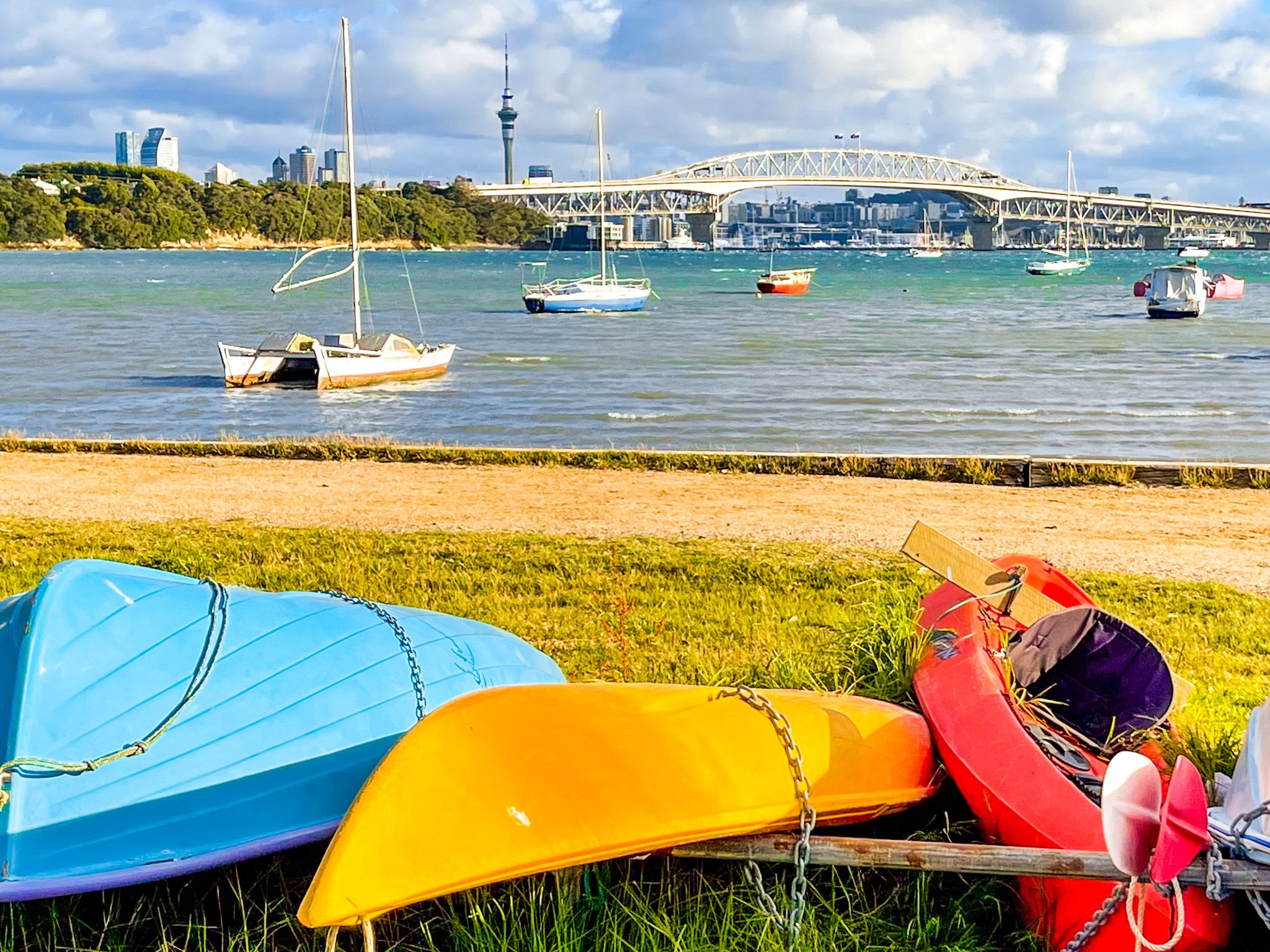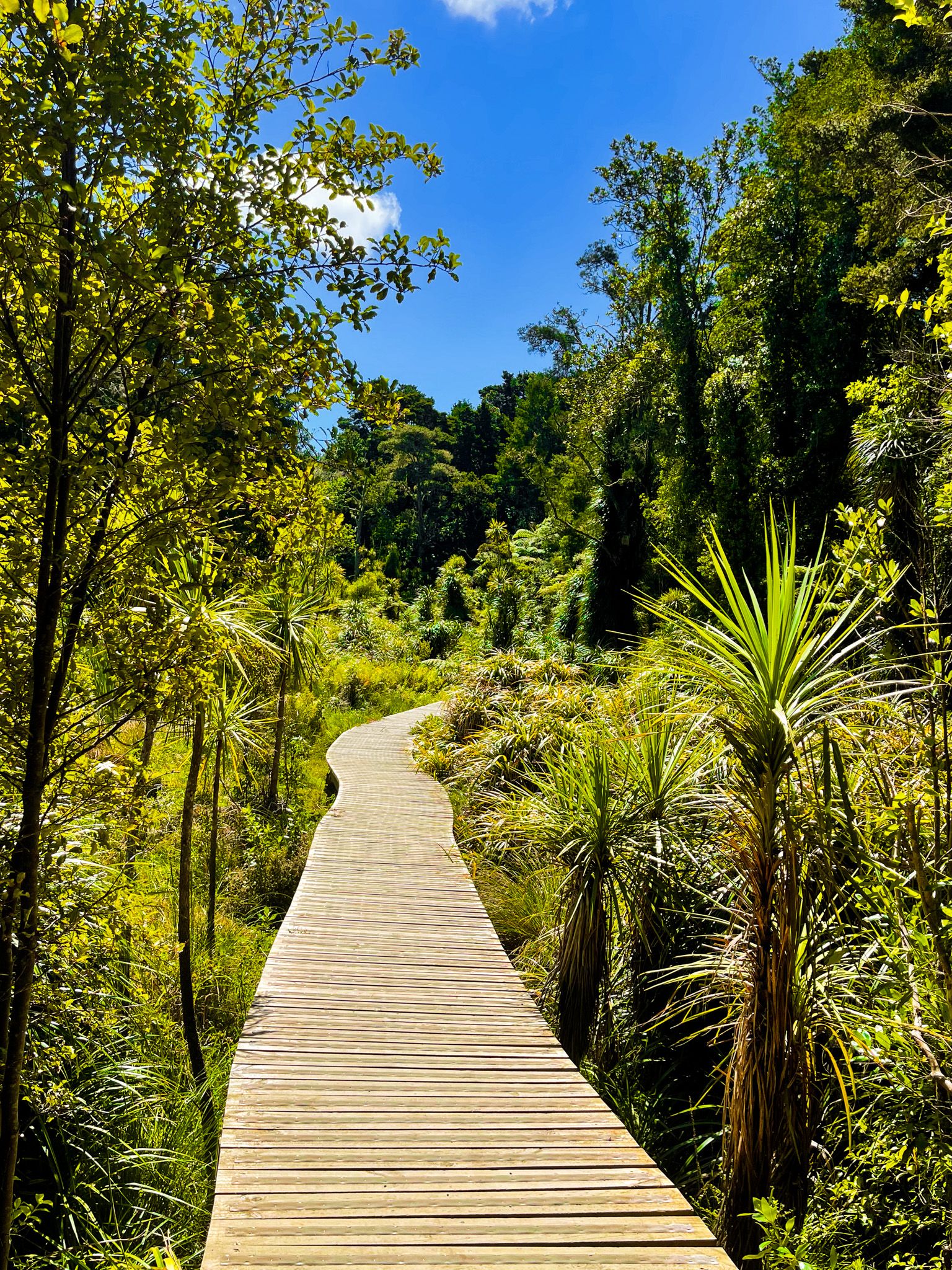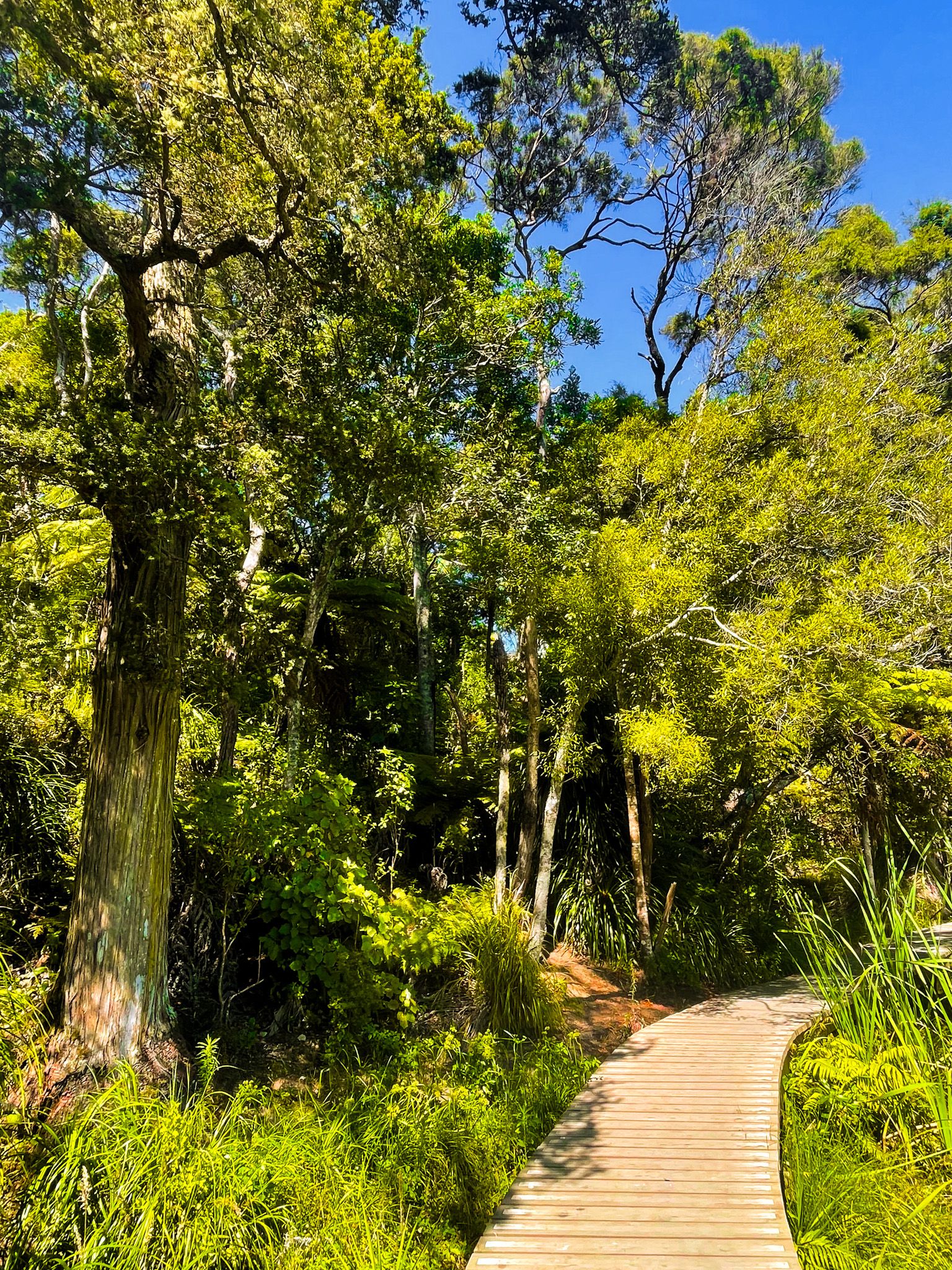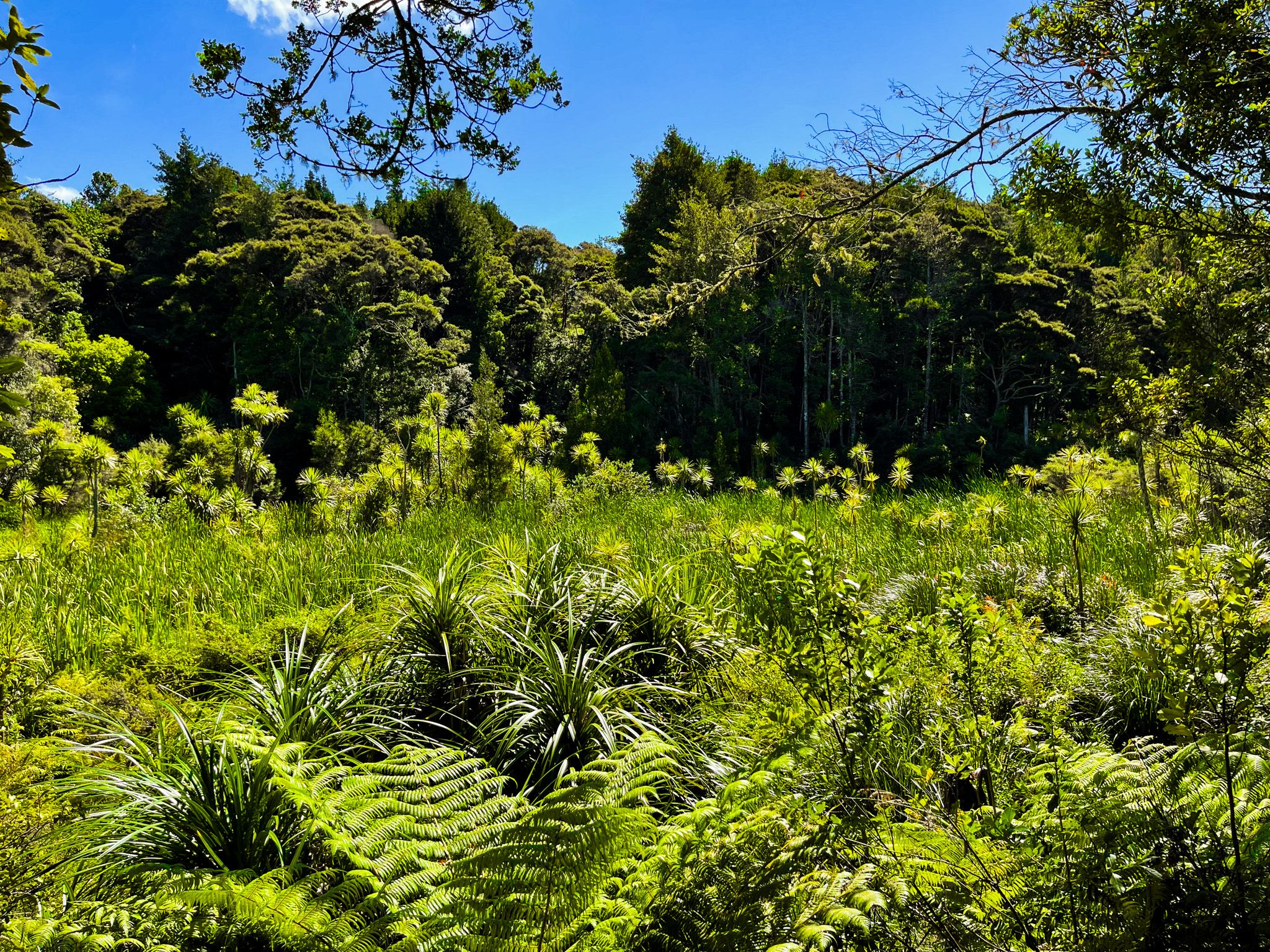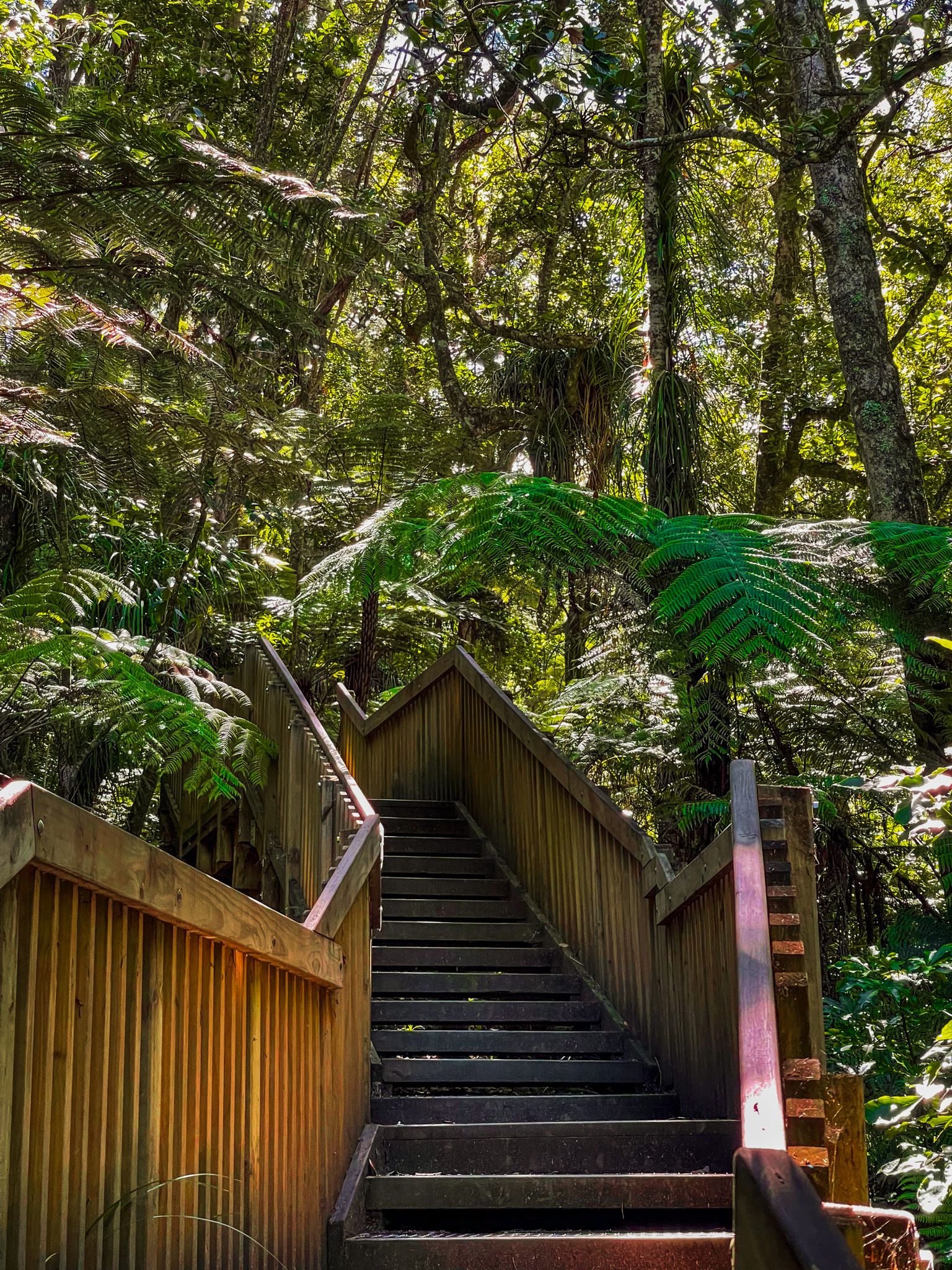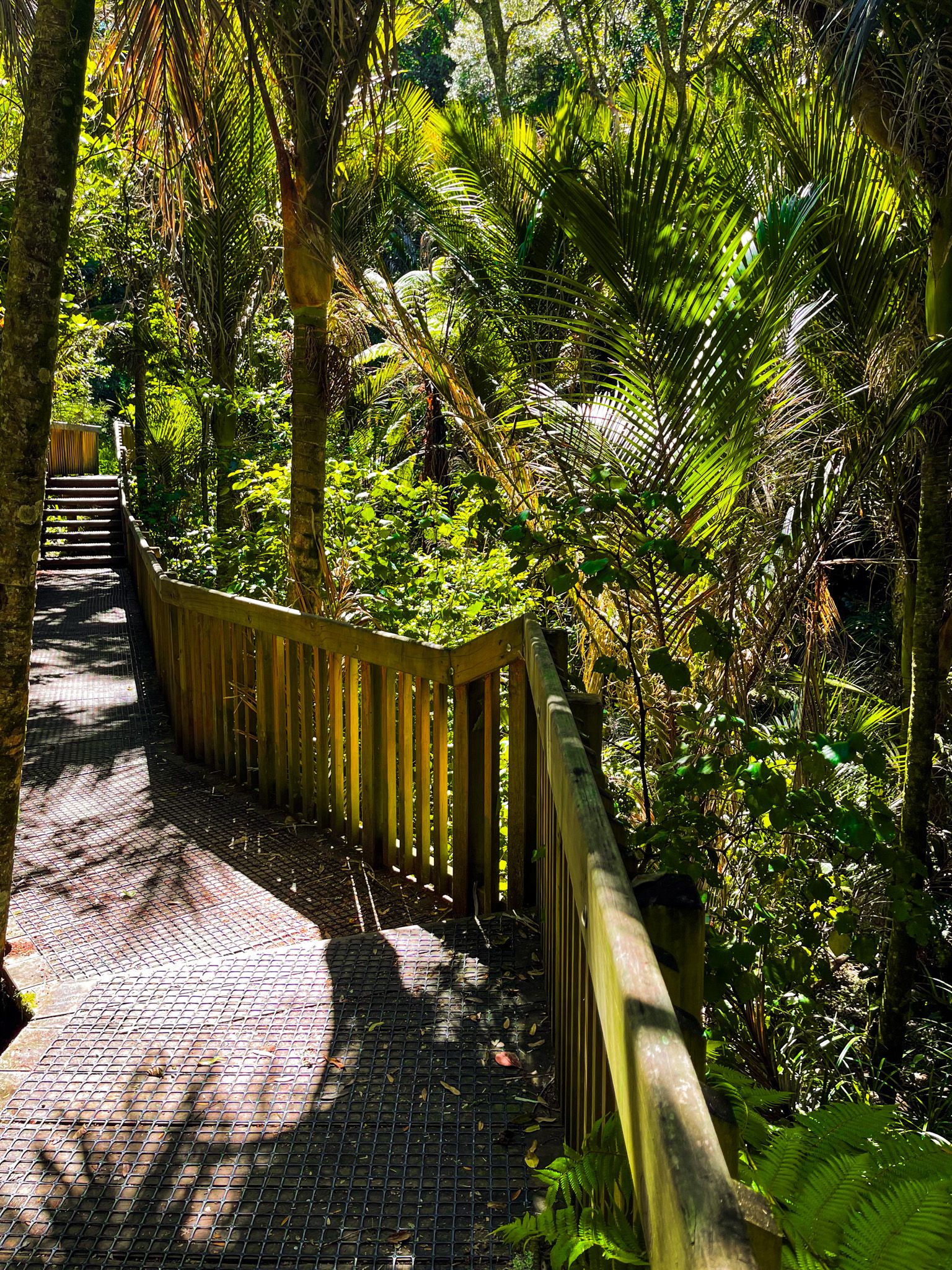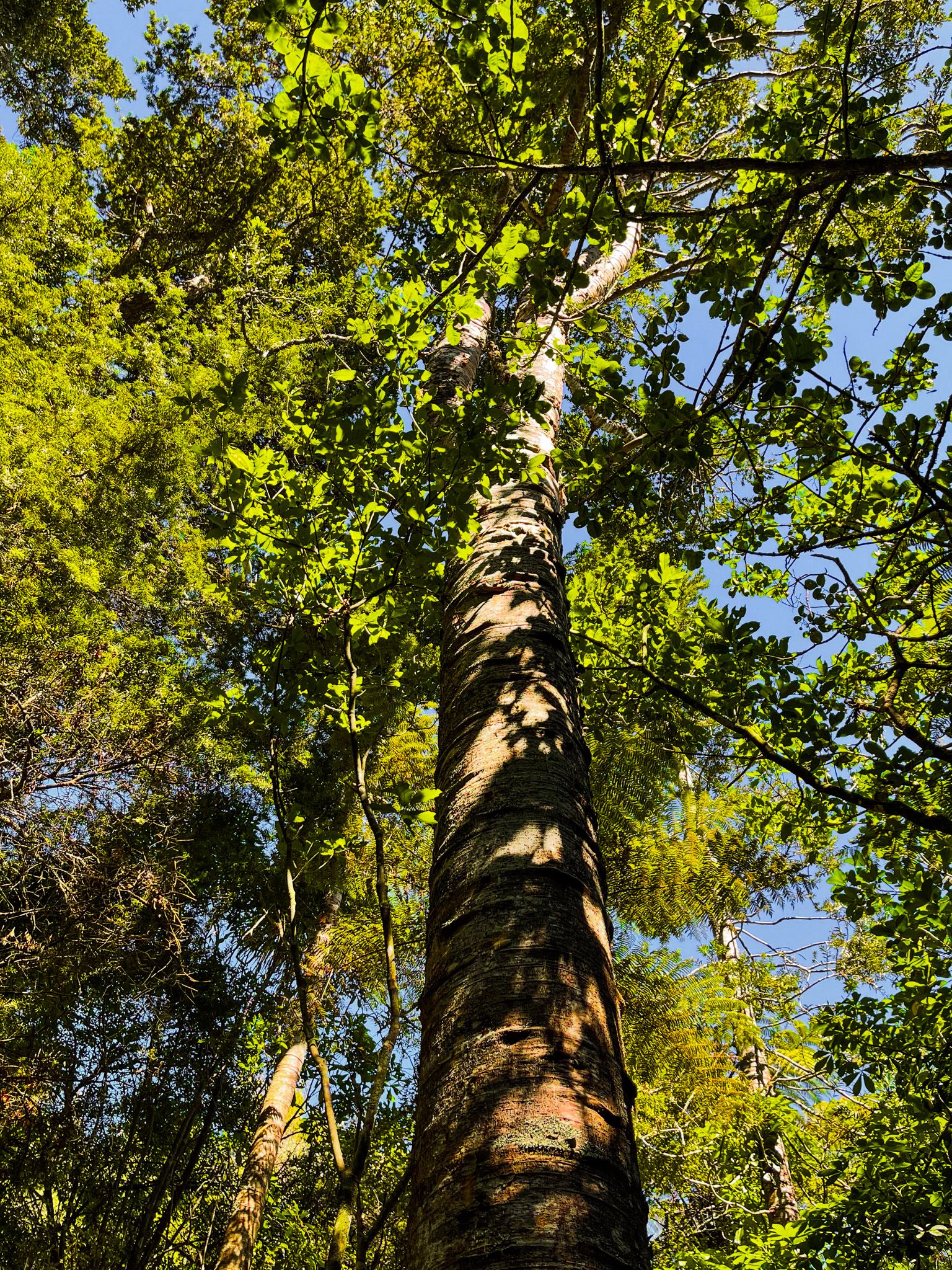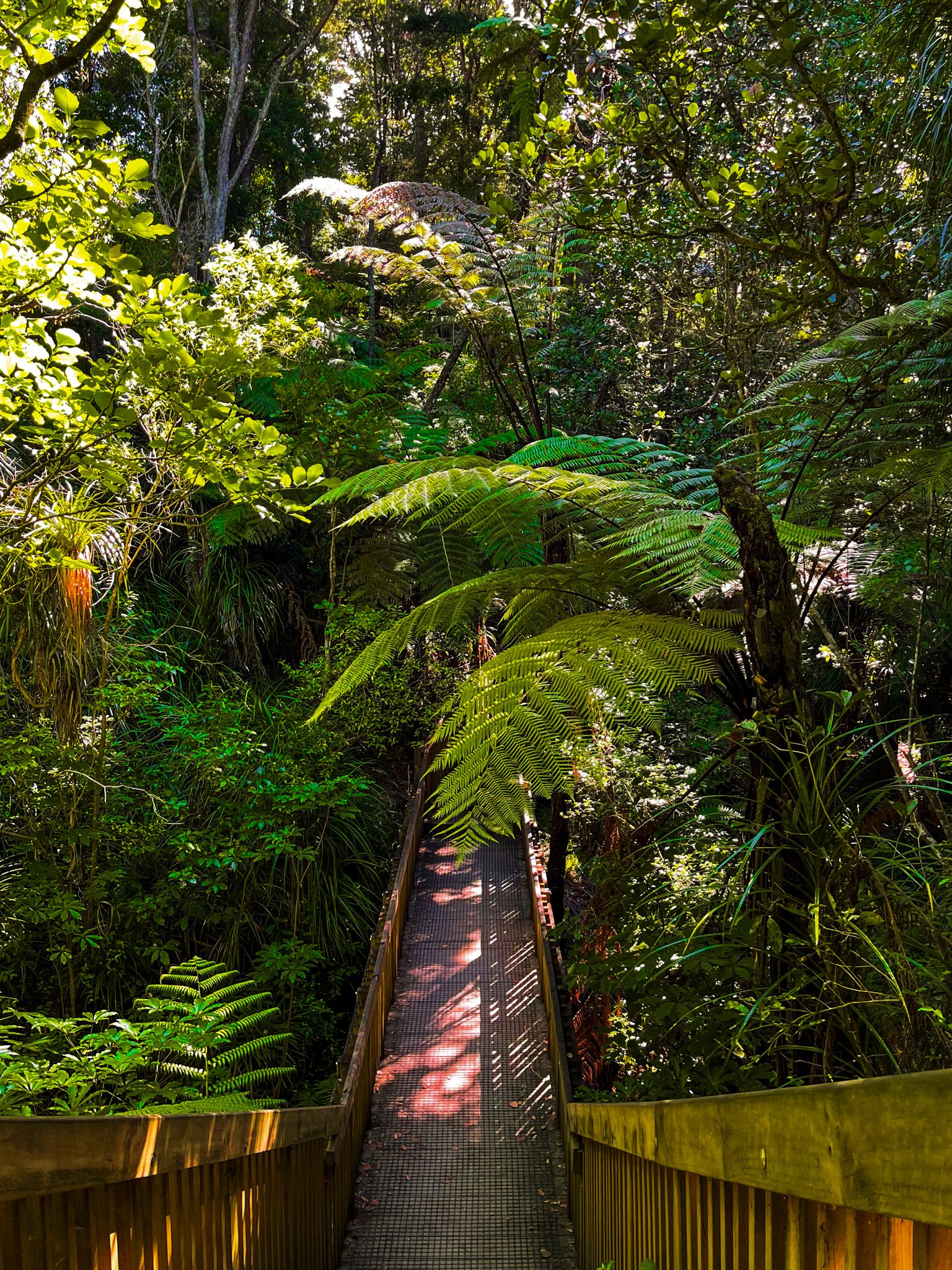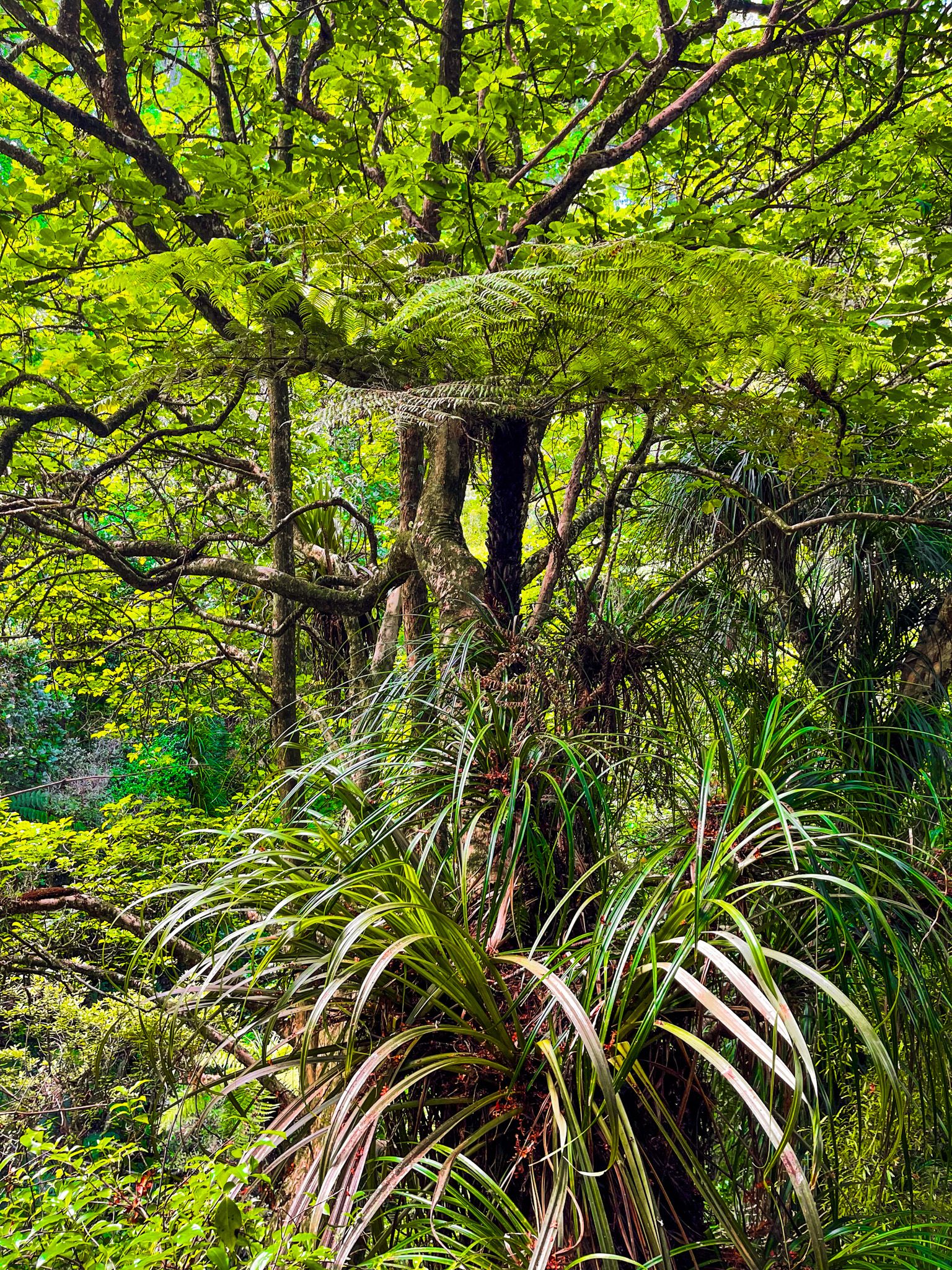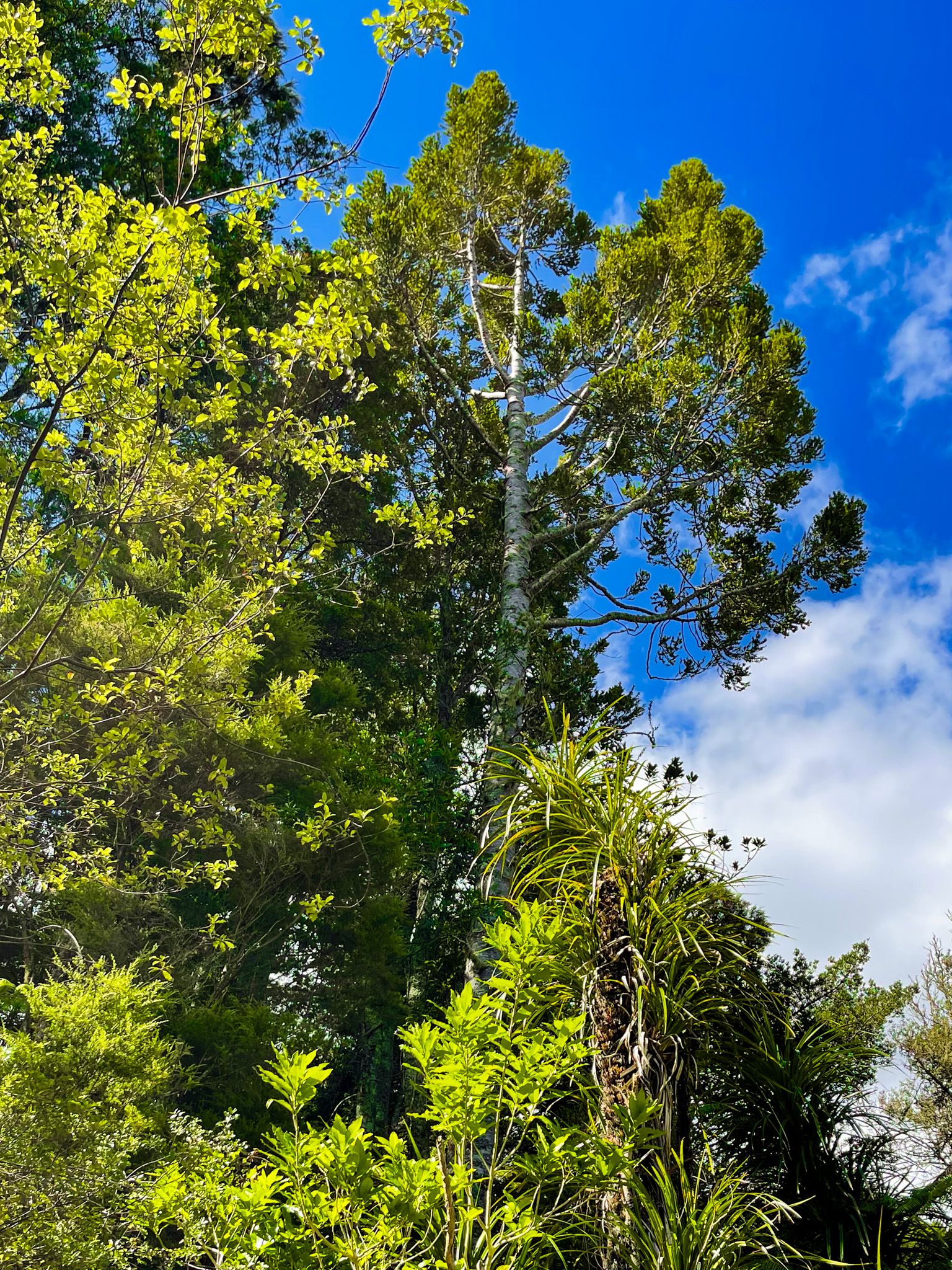Wai Manawa / Le Roys Reserve is on Auckland’s North Shore. The reserve is an interesting mix of lowland forest, including kauri, and wetlands in a valley mainly between Onewa Road to the north and Hinemoa Street to the south. The northwest tip can be accessed from the Birkenhead village at 251 Hinemoa Street, across from the Birkenhead Library and Civic Centre building. The southeast end connects with Little Shoal Bay in Northcote on the Waitematā Harbour. There is also access from Onewa Road and several side streets, such as Glade Place, Le Roys Terrace, and Valley Road.
The main feature is a track from Little Shoal Bay to Birkenhead. It follows the line of a creek, which forms a sizeable wetland in the bottom part of the track. The valley rises steeply toward Birkenhead, and the track enters a section of mature native forest. This includes rimu, puriri, tōtara, and kauri, as well as a high but gentle waterfall. The track is accessible from several suburban streets, but the easiest way is from Maritime Street at Little Shoal Bay.
Much of the track is on boardwalks, and it only takes about 30 minutes to walk at a dawdling pace, end to end. Unfortunately, the section of the track below the waterfall and down to the wetland is badly damaged and has yet to be restored, which prevents full access from Birkenhead village. This section also contains some of the most mature forest, but about 3/4 of the reserve is still accessible and worth a visit.
There is also a viewing platform, Kaimataara ō Wai Manawa, in Birkenhead village, with views of the reserve, Rangitoto Island and southeast Auckland. Little Shoal Bay is also an attractive destination with a picnic area, a small, safe swimming beach at high tide and a playground.
The steep northwest end of Le Roys Bush was known as Te Uruwao (or Te Uruao) by early Māori. Edward Le Roy purchased the valley in 1918 and named it Urutapu. He established three ponds in the flat section of the valley with water lilies and goldfish. To prevent flooding, he piped the stream under the ponds. More lasting was the creation of the tracks and the planting of many natives, including some from Great Barrier Island. After he died in 1947, public funds were raised by the North Shore Branch of the Forest and Bird Society to acquire the valley, which led to its current European name. Additional parcels of bush were added to the reserve as they became available. In the 1970s, it was extended to include Little Shoal Bay, which the Birkenhead Council had been using as a dump until local protests overturned this.
In 2015, consultations with local Māori to establish the lookout. This led to the steam being identified as Te Wai Manawa, which was added as the Māori name for the reserve.
